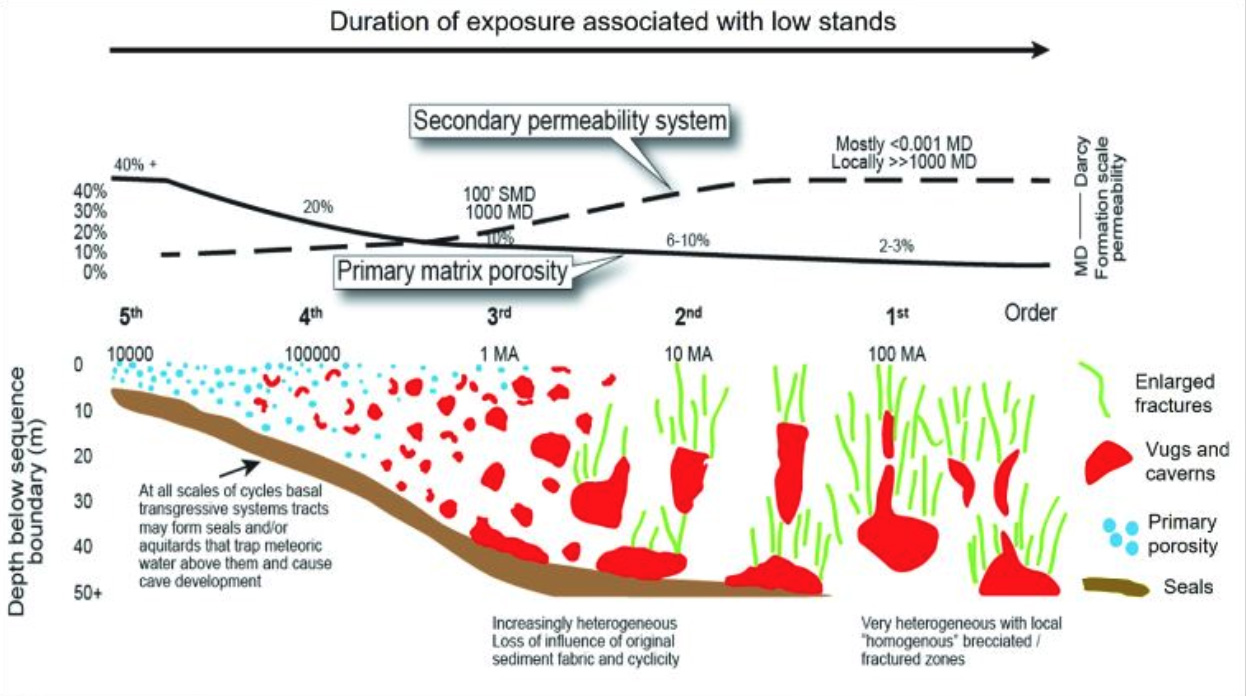A quick guide to understanding the overall structure of your karst reservoir or prospect.
This diagram summarises how the duration of exposure influences the architecture of karst reservoirs including the relative abundance and types of matrix and macroporosity, their layering vs. vertical connectivity and the development of internal seals. The horizontal axis shows the duration of exposure increasing left to right from 5th order to 1st order.
5th and 4th order low stands produce 5-10m-scale layered karst reservoirs with minor development of macroporosity. The host limestone has not been through burial diagenesis prior to exposure and the depositional porosity is often preserved. Internal seals are formed by transgressive mud rocks interbedded with the host are preserved because of the low amplitude of sea-level change.
2nd and 1st order low stands produce deeply-penetrating, vertically-connected karst systems. The host limestone has been through burial diagenesis prior to exposure and the depositional porosity is poorly preserved. Macropores include fractures enlarged by dissolution, caverns and in breccias formed by cave collapse. Owing to the high amplitude of sea-level change, karst systems often cut through internal seals.
For more information, please contact Jo or Pete at:
